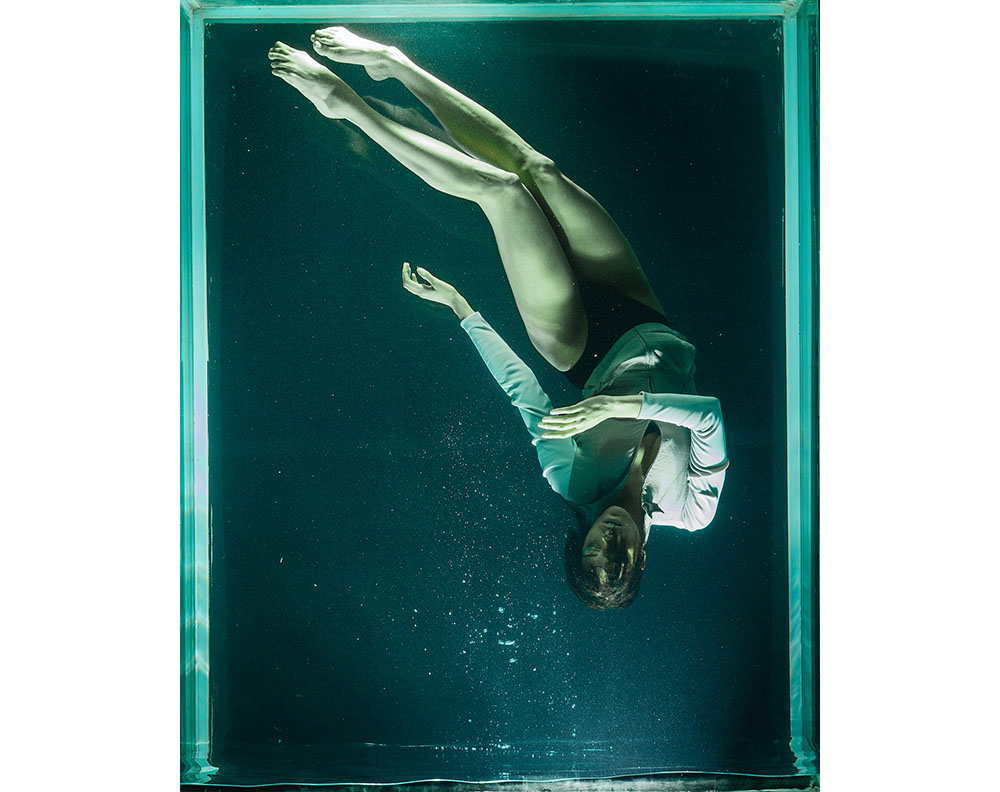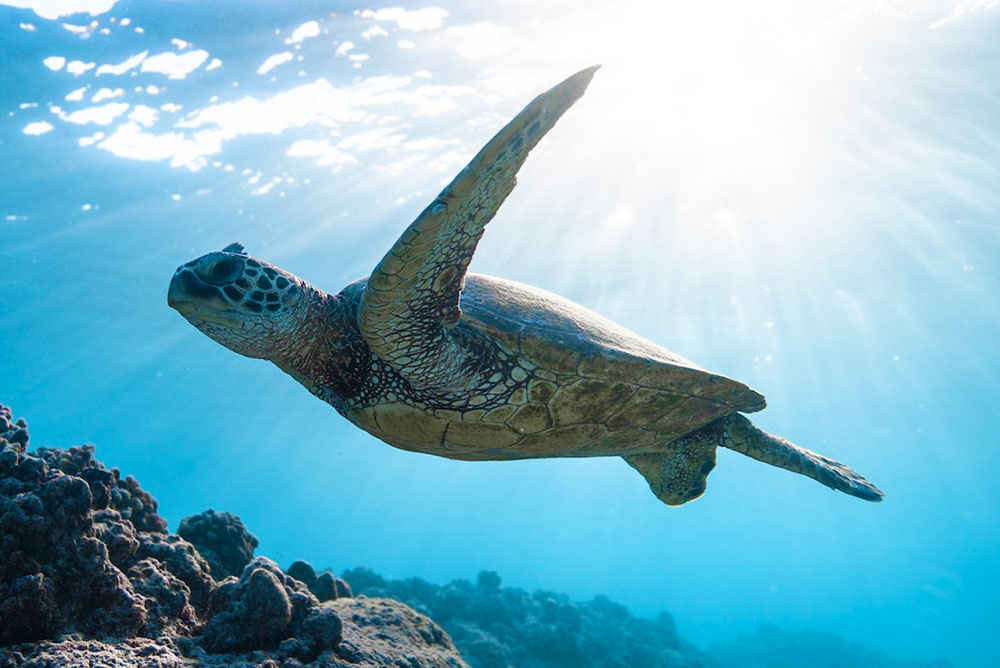Animals with lungs that can stay underwater for a long time use a special neurological mechanism, called the diving response to be able to do so. Turtles are among the champions in this field, capable of holding their breath for up to one hour. In this neurological condition, all functions in their bodies requiring substantial amount of energy slow down to minimize oxygen consumption. Their heartbeat and metabolism decrease, allowing them to enter an exceptionally relaxed state.
Activating the Diving Response in Humans
Humans can do the same, and you can also learn to use it to calm yourself down at any time. It can be your ‘express ticket’ to relief and relaxation when you feel tense, or if you want to make yourself fall asleep rapidly. Although you will never be able to hold your breath for an hour as turtles can, some freedivers, who initiate the same mechanism in themselves to be able to dive deep underwater, can hold their breath for longer than 10 minutes and reach depths below 100m on a single breath. Against common belief, they are not training themselves to forcefully supress their urge to breath. They train themselves to relax deeper and deeper using their diving response, making themselves feeling so relaxed that they do not feel need to breath anymore. It is believed that humans have inherited this mechanism from their ancestors who once lived in water and that is why we can also initiate it in ourselves.

Normally, when you are underwater, your subconscious brain considers it a place where you’re not supposed to be, so it quickly gives you an intense urge to breathe, in order to force you out of the water. However, if you start to make repetitive dives with some resting time in between, you’ll notice that you can stay underwater longer and longer. At some point, you will feel deeply relaxed and capable of staying underwater much longer than before. That’s when your diving response activates. Your subconscious brain realizes that you are not drowning, but diving, possibly to find food like turtles do. It will help your dive with tuning down your nervous system and metabolic processes. Your body will use much less oxygen, you will feel completely calm, and that is why you will be capable of holding your breath much longer. Neurochemicals with tranquilizer effects, like serotonin, acethylcholine, and GABA will be released in different parts of your nervous system.
The Diving Response Can Switch Off Stress Mechanisms
Because stress increases oxygen consumption in the body, the diving response switches off your stress mechanisms if you are not in a severe danger situation. It’s no wonder that many freedivers become ‘addicted’ to this sport due to the profound sense of relief and relaxation it provides. When you come out of the water after a freediving session, you enter a state of mind where you cannot imagine why you worry about so many things in life at other times. You think that as long as you’re healthy, have food, and a place to sleep, you have everything you need to feel content and satisfied, and all the other things in life are just ‘nice to haves’.

Because this state of mind feels so healing, the famous freediver and scientist Stig Severinssen started helping people recover from psychological disorders like PTSD by teaching them to activate the diving response in themselves through breath-holding exercises without being in water. After reading the following disclaimer, you can learn more about how such exercises work. Please understand that the following part of this article is meant to explain the mechanism and is not an instruction for personal practice.
DISCLAIMER BEFORE EXPERIMENTING WITH DIVING OR HOLDING YOUR BREATH
If this article inspires you to learn to activate your diving response through breath-holding exercises or diving, first, take a course with a professional breathing coach or sign up for an AIDA or PADI freediving course. Before anyone jumps into the water and starts diving or doing any type of breath-holding exercises, I warn everybody that it can be dangerous to do so without sufficient preparation and proper safety measures.
THE WRITER OF THIS ARTICLE DOES NOT TAKE ANY RESPONSIBILITY FOR ACCIDENTS IF SOMEONE TRIES DIVING OR DOING BREATH HOLDING EXERCISES INPIRED BY THIS ESSAY
If you accidentally do breath holding ‘too well’ until your oxygen level depletes you can lose consciousness. If you attempt to do it in a bath tub at home, or in the swimming pool you can easily die from drowning if you suffer a black-out. If you try doing it out of the water you may fall during breath holding and seriously injure yourself. Therefore, follow a professional training of a skilled instructor if you want to learn how to do such exercises safely.
The Procedure of Activating the Diving Response Without Being In Water to Induce Deep Relaxation in Body and Mind

People can activate their diving response even without diving in water. It is less intense than doing it underwater, but it can be still very powerful. It only requires holding the breath three to four times in a row with slightly increasing lengths. It is the best to do in lying position on the back to maintain a relaxed posture and for safety reasons. After each session, it is important to take two- to three-minute pauses for relaxation while doing normal tidal breathing. Hyperventilation, which means breathing more or deeper than normally, is strictly forbidden because it can lead to losing consciousness before feeling any warning signs of discomfort. Without hyperventilation people start to feel intense urge to breathe minutes before their oxygen levels would get dangerously low. The most important thing during the exercise is to focus on joyful relaxation and have no ambition to hold the breath for as long as possible. If someone does it so long that it does not feel good anymore, then they train themselves to get stressed rather than experiencing more relaxation. Stopping immediately each time when breath holding begins to feel uncomfortable and trying to enjoy and relax as much as possible before reaching that point is the right attitude. Smiling a little bit during breath-holding can trigger the release of endorphins and make the exercise even more enjoyable.
After each breath-holding cycle, most people will be able to hold their breath around fifteen seconds longer. During the third or fourth cycle, the hands and legs may start to feel colder and a little numb, which indicates that the mammalian diving response is being activated and the blood circulation in the limbs slow down. From that point, people can hold their breath even longer and feel as if their body is starting to fall asleep while also feeling extremely calm and joyful in their minds.
By practicing breath holding regularly, the diving response can be strengthened. It will start earlier, and the relaxation and joyful feelings will become more intense.
